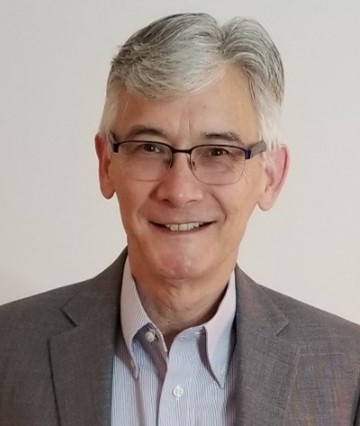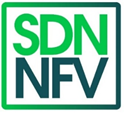____________________________________
Work Area Updates
For a full list of all Technical Reports approved by the Broadband Forum, click here. Please feel free to share this information with your colleagues, so they are engaged and aware of the developments of this work. For additional insight and to get involved, sign up for the members-only Broadband Forum tools and access your account using your company email address.
ATA - Aloha - wrapping up 2022 in paradise!
Target: The Access & Transport Architecture Work Area maintains primary architectural work of the Broadband Forum. This work reflects the control, management and data plane aspects of the Broadband Forum’s defined and new architectures. These architectures are augmented to leverage new industry practices while protecting the investment in broadband networks already deployed.
Outcomes:
- Performance, Experience, Application Testing Project Stream - TR-452.2 Quality Attenuation Measurements using Active Test Protocols - Final Ballot passed! Document posted to the public website. The latest press release can be viewed here.
- Performance, Experience, Application Testing Project Stream - WT-471 Issue 3: IP Layer Capacity Metrics and Measurement - Final Ballot passed! (This will be posted to the public website soon).
- Access Architecture Project Stream - MD-459.4 CUPS for a Disaggregated BNG: Objective and Scope started (during ATA interim meeting in London).
Progress:
- Access Architecture Project Stream - WT-459i2 working through Straw Ballot comments and making significant progress.
- Access Architecture Project Stream - WT-474 Subscriber Session Steering project continuing YANG data modeling project (YMSSS) for the entities and relationships defined in WT-474 offline via BitBucket.
- Access Architecture Project Stream - WT-487 DBNG for Wired Access - Under development - protocol analysis phase and debates.
- Access Architecture Project Stream - WT-497 - WiFi Authentication - Under development.
- Mobile Transport & Routing Project Stream - Next steps discussion identified a number of potential future work items for the project stream.
- Performance, Experience, Application Testing Project Stream - WT-452.4 QED Measurement Formats (started at ATA interim meeting in London).
- Performance, Experience, Application Testing Project Stream - WT-452.5 Quality Attenuation Measurements Using L2 PM OAM (started at ATA interim meeting in London).
ATA Marketing Group - See Join or Leave BBF Groups and Email Lists to subscribe.
For more information on ATA Work Area’s ongoing work, visit: Access and Transport Architecture home page.
Key components of the app-enabled services gateway being finalized, and Smart Home Project Stream launched
Target: Finalize key technical components of the app-enabled services gateway.
Outcomes: WT-181 Device:2.16 and USP version 1.3 are on track to be released by Q2 2023 along with important deployment guidelines in WT-488 and WT-492.
The Broadband User Services Work Area is finalizing the key components necessary for operators and vendors to have a standardized app-enabled services gateway to realize new revenue-generating services and efficiently deploy applications in the connected user network. This includes updates to its flagship standards, TR-369/USP and the TR-181 Device:2 Data Model to support containerized applications on end-user devices, as well as a guide to developing those devices (WT-492) and deploying them in a managed heterogeneous network.
The group also agreed to start a new Project Stream to standardize an Operator-Grade Smart Home. This will be an industry-wide effort focused on leveraging USP and Device:2 to fill gaps in the standardized smart home, define requirements for smart home devices to qualify for service provider deployments, and test plans to support the project. Look for news in early 2023 on this much needed work.
Take a look at the BUS Work Area’s latest work: Broadband User Services home page.
Common YANG never sleeps; new TR-383 Amendment is on the way
Target: Specify YANG modules that are applicable to multiple Work Areas, provide support to those same Work Areas for their specific YANG projects, and maintain YANG Best Current Practices, processes, procedures, and tools.
Progress: Good progress on the functional modeling of nodes supporting MoCA Access 2.5 interfaces.
Outcomes: Completion of Straw Ballot comment resolution of Amendment 6 of TR-383; accepted proposal to define a YANG model for bulk data export via IPFIX.
The Common YANG Work Area continued to make good progress on its key project deliverables, in close collaboration with both SDN/NFV and FAN Work Areas.
Straw Ballot comment resolution on Amendment 6 of TR-383 ‘Common YANG Modules for Access Networks’ was completed, with an overall objective for publication by Q1 2023. This next amendment aims to add functionality that addresses scale in large networks, as well as further improving existing functionality.
A first proposal was reviewed covering the functional modeling of the Multimedia over Coax (MoCA) Head-end and Client Nodes, as part of WT-496 ‘YANG Modules for MoCA Access 2.5 Interface’. It is expected that derived YANG data models will be brought forward in a follow-up interim conference call.
The group accepted a proposal to define a YANG model for the management of bulk data export via IPFIX. This will be added in a future amendment of WT-383. The group will start a review of the associated YANG module specification.
Joint sessions were held with the SDN/NFV and FAN Work Areas to review items of common interest, including proposed changes to Issue 2 WT-413 ‘SDN Management and Control Interfaces for CloudCO Network Functions’, contributions on Issue 2 of WT-386 ‘FANS Access Network Sharing Interfaces’ and work on PON management.
Moving forward, the group will continue the formal review of the specification of YANG modules for VoIP; this topic did not get addressed at the meeting but will be covered during a series of interim conference calls. This work is intended to be covered in a future amendment of TR-383.
For an overview of the Common YANG Work Area’s current activities, please visit: Common YANG home page.
FAN continues key progress across its Project Streams
Target: The Fiber Access Networks (FAN) Work Area specifies and maintains PON architecture and nodal requirements, PON abstraction and mobile backhaul requirements. It is also responsible for PON test suites related to ITU-T PON Conformance and Interoperability, and compliance Test Plans related to XGS-PON, NG-PON2 and PMD/TC Layer. Lastly, it is responsible for ITU PON YANG data model specifications.
In Progress:
Unassigned Project Stream
In the last quarter and during the Q4 Meeting, the Unassigned Project Stream continued with:
- WT-142 Issue 4 Framework for CPE WAN Management Protocol (CWMP) and USP enabled PON devices was prepared for Final Ballot. Final ballot closes on Monday, 19 December 2022.
- Multi-management study on how to handle multiple management domains (e.g., OMCI and USP/CWMP). This study continued to review contributions related to firmware management and VLAN bootstrapping.
During the Q4 meeting, the Interoperability Project Stream progressed:
- Draft version of DTP-255 and new contributions will be discussed.
- DTP-247 Issue 4 Corrigendum 1 Straw Ballot version will be prepared for future FAN teleconference.
PON Management Project Stream
During the interim meeting period, it was identified that WT-385 PON YANG and WT-489 ONU Authentication had dependencies before they can be completed. It was agreed that WT-385 needed to be brought to Straw Ballot (along with WT-489). During the Q4 meeting, there were discussions around how to publish WT-385 to unblock WT-489 Straw Ballot. A path was agreed upon.
A new NPIF on emulated schema mount was discussed in the Q4 meeting. Those interested in cosigning are encouraged to reach out to the NPIF author.
25GS-PON Project Stream
New WT-309 contributions were discussed in Q4 meeting.
G.HSP 50G-PON Project Stream
New WT-309 and WT-423 contributions were discussed at the Q4 meeting.
For more on the FAN Work Area’s ongoing work, please see: Fiber Access Networks home page.
PHYtx Work Area publishes TR-338 Issue 3
Target: To help service providers deploy equipment that will provide better Quality of Experience (QoE) for their end-users.
Progress: Resolved all the technical and editorial comments on the Working Text of ‘Appendix G Australian cable models’ (WT-285i2a1). WT-476 ‘G.hn Access Performance Test Plan’ is scheduled for Straw Ballot comment resolution.
Outcome: TR-338 ‘Reverse Power Feed Test Plan’ Issue 3 has been published. DTP-337i4c1 and WT-285i2a1 are ready for Final Ballot approval.
At this meeting, the PHYtx Work Area addressed the technical and editorial comments provided during the Straw Ballot review of WT-285 Issue 2 Amendment 1 ‘Appendix G Australian cable models’. The Working Text is now ready for Final Ballot approval.
TR-338 Issue 3 ‘Reverse Power Feed Test Plan’ has been published. This issue adds testing of reverse power feeding over coaxial cable deployments, according to ETSI TS101 548-2, increasing the operators’ options to reliably roll out reverse powered access equipment.
A corrigendum to TP-337i4, the G.fast Certification Test plan, has been approved to go to Final ballot.
Performance pass/fail metrics derived from a Plugfest held on September 26-30 have been included in WT-476 ‘G.hn Access Performance Test Plan’. The document is now ready to undergo its second Straw Ballot commenting round, immediately followed by the Final Ballot approval prior to the 2023 Q1 Meeting.
When approved, the performance requirements of WT-476 will become part of the GHNA Certification Program in collaboration with the HomeGrid Forum.
For further insight into the current work of the Physical Layer Transmission Work Area, visit the Physical Layer Transmission home page.
SDN/NFV closes in on publication of TR-477 on disaggregated Access Nodes
Target: Define the Cloud-based Central Office (CloudCO) architecture using SDN, NFV, and cloud technologies to support network functions fundamentally redefining the architecture of access and aggregation networks and support the migration of SDN and NFV into all aspects of broadband networks facilitating the agile deployment of new distributed broadband services and applications for operators with greater operational efficiency and lower cost.
Progress: The SDN/NFV Work Area continues to progress the CloudCO project for virtualized network functions, SDN management and control and domain orchestration capabilities in a broadband network. The main activities currently ongoing are related to the disaggregation of the Access Node and defining the related interfaces. The “Cloud Component” Project Stream is continuing work on Automated Intelligence Management (AIM), Fixed Access Network Sharing and Smart SD-WAN.
Outcomes:
WT-477 on Access Node disaggregation is close to be completed. The missing data models were created and reviewed by the Common YANG and FAN Work Areas in a joint session. Further details need to be analyzed to finalize the document.
WT-413 Issue 2 on ‘SDN Management and Control Interfaces for CloudCO Network Functions’ is progressing. In a joint meeting, the SDN/NFV and Common YANG Work Areas reviewed the approach and agreed to report a detailed list of data models, so that vendors can rapidly discover the data models to be implemented for each access network function.
On the Artificial Intelligence and automation fronts, work continues on WT-486, which specifies the interfaces for the previously published AIM Framework specification TR-436. Contributions were submitted on the missing interfaces and now the document is almost ready for Straw Ballot. It was also discussed whether further details are needed for specific implementations and if a liaison needs to be submitted to TM Forum. While this is a different Project Stream within the SDN/NFV Work Area, network automation and closed-loop operations are imperative for simplifying network validation and engineering, streamlining network deployment and upgrades, and improving operations with less error-prone and automated OAM in the CloudCO environment. This will also automate some management functions and help realize rapid troubleshooting and pre-emptive maintenance.
There was a proposal related to an initial set of YANG data models for WT-386i2 on Fixed Access Network Sharing discussed in a joint call with the Common YANG and FAN Work Areas. It was agreed that comments would be received ahead of final approval.
The Work Area has also approved NPIFs for three focus areas. This includes Access Node Disaggregation (WT-477i2) to include new virtualized functions, AIM Framework (WT-436i2) to extend the architecture for new use cases, and on CloudCO interfaces (WT-411i2) to include the Access SDN Management and Control northbound interface intent-based interactions addressing access network topology and abstraction.
Two NPIFs were also proposed on vOMCI Telemetry (WT-451i2) with partially different scopes. It was agreed to merge them together into a single project that also includes possible impact on other documents (e.g. WT-477).
Bjørn Ivar Teigen, Head of Research at Domos discussed the notable advantage of dynamic subscriber session steeringin a blog post focused on this year’s CloudCO demo at Network X. The blog highlighted how subscriber session steering can allow an ISP to dynamically re-allocate resources between isolated slices in a running network and increase a subscriber’s bandwidth on-demand.
Bruno Cornaglia and Mengmeng Li, SDN/NFV Work Area Co-Directors at Broadband Forum discussed how disaggregating Access Nodes brings simplified operations and promotes greater competition within the supply chain. The blog post from Bruno and Mengmeng also outlined the business motivations offering greater choice for operators.
More information about the SDN/NFV Work Area can be found at: SDN and NFV home page.
WWC is finalizing key Phase 3 specifications
Target: Address the needs of operators, which have wireline or mobile networks deployed so they can leverage their assets with combined subscriber offerings with a converged core.
Progress: The WWC Work Area is progressing its work on the third phase of specification development. It currently has two active Project Streams, the 5G Project Stream and IMS for 5G-RG Project Stream. With this work, the group continues to subsume more of the capabilities of the 5G architecture.
Outcomes: Work continues on a new set of capabilities and enhancements with the latest specifications in progress for subsequent publication.
Work in the WWC Work Area has transitioned from improving the basic set of specifications in Phase 2 to focusing on topics that bring more value to 5G for wireline and provide operators with increased flexibility, revenue potential and deployment options. The goal is to increase the service capabilities of the network to allow operators to fully leverage convergence of their networks while at the same time giving them more paths to transition their networks to a single 5G Core.
The group continues to incorporate capabilities from the 5G toolkit into our specifications to realize a variety of use cases. These range across a broad spectrum and include topics such as hybrid access, enhanced work from home, access sharing scenarios and convergence of voice with the mobile system. This work will allow converged operators to provide a uniform experience to their customers irrespective of the access or appliance they are using, supported by a common and streamlined back office and control plane.
The 5G Project Stream is working on finalizing two specifications, WT-457 (FMIF Functional Requirements) and WT-458 (CUPS for 5G Wireless Wireline Convergence), with WT-458 scheduled to enter the Straw Ballot process before the Q1 Meeting, following WT-457 which has undergone Straw Ballot review in the Q4 Meeting. Both of these documents expand the deployment options for 5G WWC. The IMS for 5G-RG Project Stream addresses 5G-RG IMS Voice support, with work on the architecture and a profile for residential voice. Work is moving forward on WT-493 (IMS for 5G-RG Architecture) and WT-494 (IMS for 5G-RG Residential Voice Requirements). This key piece of work will converge legacy voice services onto the 5G system. With these two key baseline texts established, there is now an opportunity for all interested parties to contribute to this important work.
The group along with the BUS Work Area continue to work with 3GPP to introduce the Release 18 Study output, and this is expected to facilitate a WWC study around “Devices behind the RG”. The BUS and WWC Work Area has jointly reviewed and responded to the liaison, according to the ongoing collaboration with 3GPP on WWC and 5G-RG management requirements.
The WWC Work Area has been discussing plans for the group’s first demonstration at an industry event to showcase the 5G Phase 2 and Phase 3 work. The group continues to expose the industry to the latest WWC work and supports the ongoing education and marketing activities, including the continued development of its webinar series.
Broadband Forum is taking an important role in developing 5G, continuing the productive cooperation with 3GPP, and making recommendations for the connection points between the fixed and 5G mobile core networks in order to drive core convergence.
Christele Bouchat and Manuel Paul, Work Area Directors of the Wireless-Wireline Convergence Work Area at Broadband Forum produced a blog post this quarter on achieving a smooth evolution path to a standardized 5G hybrid model. The blog discusses how operators can unlock more value and a greater range of options thanks to Broadband Forum’s latest phase of specifications.
For more on the WWC Work Area, please see: Wireless-Wireline Convergence home page.
OB-BAA’s Release 5.1.1 launched during fourth quarter
OB-BAA –Ongoing collaboration between Open Source and Open Standards continues to advance and accelerate the adoption of interoperable, standardized solutions across the industry.
The Open Broadband – Broadband Access Abstraction (OB-BAA) project team successfully launched Release 5.1.1 in November. This included enhancements and fixes to the existing OB-BAA software, providing enhancements to microservices discovery and scale testing of 10,000 ONUs. The group also continues to plan Release 6.0 activities, with discussions continuing on identifying a list of candidates to focus on.
For more information on the OB-BAA project’s latest work, see: Open Broadband-Broadband Access Abstraction Project Home
OB-MAP and prpl Foundation continue joint collaboration
The Open Broadband – Multi Access Point (OB-MAP) project and the prpl Foundation’s prplMesh project are establishing a baseline vision of how data and control commands will be represented in TR-181. This will influence the design of the APIs presented by prplMesh. The data model (and prplMesh APIs) will meet the diagnostics and management needs of service providers that use multiple physical layer networking technologies to deliver ever-increasing broadband bandwidth and innovative services through increasingly complex home networks to end-user devices.
The OB-MAP project team has continued to collaborate with the prpl team on requirements and feature prioritization, and data modelling of multiple devices and services in a mesh network. Progress has also been made on prplMesh’s Northbound API (NAPI), and the group has been assisting with the use and definition of Broadband Forum’s USP support for internal services. Recently, work continued on defining management interfaces for:
- Network-wide SSID, with groupings and an underlying distribution system / VLAN.
- Statistics and topology for wired stations and wired backhaul
- IEEE 1905 neighbor statistics
- Unassociated station statistics
- Extender with both EasyMesh agent and USP/cloud agent
- Station statistics while roaming
For more on the OB-MAP project’s ongoing work, please see: OBMAP Home
Goldeneye Release rounds off successful 2022 for OB-USP-Agent
OB-USP-Agent Release 7 (Goldeneye) is wrapping up in the next few weeks. Goldeneye is mostly a maintenance release with the following focus:
- Key improvements around the MQTT MTP implementation.
- Performance improvements for large data models that can result in big Get responses.
- Fixes related to compliance testing and the updated TP-469a2 Test Plan.
- Resolution of some known issues (including several raised in GitHub).
The plan is to keep to the usual OB-USP-Agent six-month release cadence, which means that the team will be scoping Release 8 at the start of the year with an expected release date of mid-2023. Based on recent OB-USP-Agent meeting discussions and the BUS Work Area’s focus on finalizing the Services Architecture solution, it looks like Release 8 will mostly focus on implementing the UNIX Domain Socket MTP and the associated components. This will help enable USP communications between services within the CPE.
For more on the OB-USP-Agent project’s ongoing work, please see: OB-USP-Agent Home
Ninth OB-UDPST Release: applicability to mobile access measurement improves
Current progress: The project team delivered its Ninth release, 7.5.1 on November 18, 2022. This release incorporates feedback from users of a key enhancement in Release 7.5.0, which was the new “Type C” load adjustment (search) algorithm, which is faster and more dynamic than “Type B”. The 7.5.1 release adds a new feature in response to testing/experience on mobile/radio access with the new algorithm. In this feature, the team made the decision that UDPST will now ignore the Reordering and Duplication impairments as input to the load adjustment search algorithms as the default. Reordered and Duplicate packets are legitimate contributions to IP-Layer Capacity and are sometimes prolific in mobile access environments. The UDPST utility still measures these impairments in every test, so this change only affects the impairment processing in Type B and Type C algorithms.
Issue 3 of TR-471 now incorporates all the 2022 improvements and features implemented by the OB-UDPST project. TR-181 has been updated with changes to the UDPST data model and the default configuration settings. The team also ensures that ITU-T Recommendation Y.1540 and other industry specifications remain in-sync with UDPST running code.
The OB-UDPST project team contributes to the IETF IP Performance Measurement (IPPM) Internet Draft development of the UDPST protocol specification and measurements. This includes evaluation of UDPST-based measurements to assess “Latency under Working Conditions/Load”. Latency is a topic of considerable interest when attempting to support cloud game-players and the platforms they use, in addition to requirements for sufficient IP-Layer Capacity (a metric and measurement already standardized in TR-471 and RFC 9097).
Future Plans: The project team provided its status report to the Open Broadband Oversight Committee (OBOC) in November 2022. The UDPST applicability to Working Latency measurement, and the ability to implement application-layer traffic performance estimation were both of considerable interest to OBOC participants.
For more information on the OB-UDPST project team’s ongoing progress, please visit: OB UDP Speed Test Home
OB-5WWC project progresses into the implementation phase
Open Broadband-5WWC (OB-5WWC) is an Open Source project focused on bringing the full benefits of the 5G ecosystem to fixed-line services and offering a full end-to-end solution to operators. The aim is to create a reference implementation of the Broadband Forum specified Wireless-Wireline Convergence solution for 5G capable Residential Gateways (5G-RGs). There are already key Broadband Forum and 3GPP specifications available to help fulfill the need for 5G and convergence, and a 5G-RG reference implementation will be of great benefit to operators, providing shorter time-to-market for products and reduced development times and cycles.
OB-5WWC also seeks to provide a production grade 5G solution stack capable of integration with OpenWRT/RDK-B frameworks and to provide a reference for testing Access Gateway Function (AGF) and Residential Gateway (RG) test tool development.
Current Progress: The project team worked on the low-level design including WWCd as a key component and clarified modules’ roles. Thanks to the members that have recently joined, the alignment on the architecture for integration with RDK-B has also progressed.
A new development environment was established and Continuous Integration (CI) was operationalized, with exploration taking place of the components for the end-to-end test environment, including AGF and 5G Core. The development includes the solution design of the Control and User Plane transport including the Stubbed AGF test tool, and 5G Wireless Wireline Convergence User Plane Encapsulation (5WE), and the 5G controller (WWCd) providing registration and session management.
Next steps: The project team’s next steps will be to start the MVP implementation of WWCd as a key module, and further improve the test environment. The group continues to align the low-level design with OpenWRT/prpl and RDK-B.
Members of the project team aim to submit an NPIF to the BUS Work Area to establish an RG architecture Technical Report.
There is now an opportunity for interested parties to offer contributions as we enter this key phase of implementation. The project continues to welcome interested parties, including candidates with software development experience in the C programming language, and radio module and mobile experience.
For any interested parties (including non-Broadband Forum members) that wish to be part of the project, please sign the project participation agreement online here.
For more on the OB-5WWC project’s current work, please see: OB-5WWC Home
Welcome to our new and returning members!
We welcomed a mix of new members and guest companies during the Q4 Meeting. We had 133 registrations, with seven first-time attendees, four guest companies comprising of DCCA Hawaii, Hawaiian Telecom, NTIA and RX Telecom, and new members of C-Data, Centec, CityFibre and Pantacor.
Are you interested in becoming the next member of the industry’s leading standards body in defining broadband networks? Broadband Forum membership will not only accelerate your company’s progress but enable you to become a key influencer in developing 5G, the Cloud, the Connected Home and Access Networks.
We have a range of membership options for companies of all sizes, from startup companies to large corporations and not-for-profit organizations. Our new Regional Operator Membership category has further opened participation; take a look for further details of the access level privileges, benefits and requirements.
To learn more about the benefits of membership, watch the video interview with Rhonda Heier, Director of Membership Development, as Rhonda discusses the value of the Broadband Forum membership here or email rheier@broadband-forum.org for more information.
We welcome all BBF members to highlight their membership on their websites using this Member Company logo:
Save the dates! Broadband Forum Meetings and BASe Events
- December 13, 2022, Broadband Access Webinar, vBASe, Virtual
- March 20-23, 2023, Broadband Forum Q1 Meeting, Dallas/Fort Worth
- June 5-8, 2023, Broadband Forum Q2 Meeting, Europe TBC
- September 4-7, 2023, Broadband Forum Q3 Meeting, Virtual
- December 4-7, 2023, Broadband Forum Q4 Meeting, Asia TBC
To register for our latest events, visit: https://www.broadband-forum.org/meetings-and-events.
Sponsorship opportunities are available for Broadband Forum’s quarterly meetings and BASe events. Sponsoring Broadband Forum events is a great way to highlight your company and exhibit your company’s innovation in the broadband industry – including demonstrations or prototypes – while showing your support of Broadband Forum. Opportunities vary and can be customized to accommodate a variety of budgets.
Please view the list of our standard sponsorship packages and benefits at: https://wiki.broadband-forum.org/display/BBF/Sponsorship+Opportunities.
If you are interested in sponsoring a meeting, please contact Rhonda Heier at rheier@broadband-forum.org.
Contact information
Questions or ideas? Contact the Broadband Forum at +1 510.492.4020 or email info@broadband-forum.org.
















